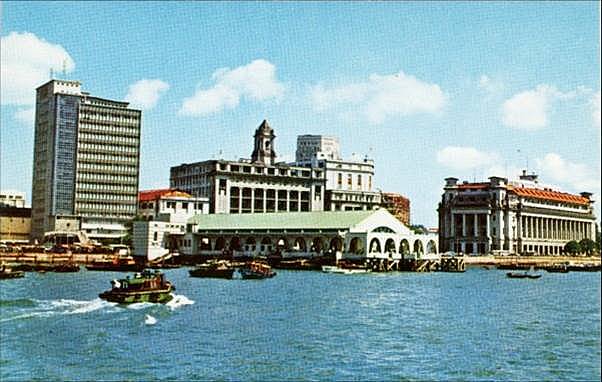To be honest, this was a purchase on impulse. For those who are looking for a technical review of the device then this post will disappoint since I don’t really talk much about the technical aspects and specifications of a device when I reviewed it. Instead, I usually talked about why I am using it, and how I used it.
Here’s a short summary on how I got the device. A shop in Tanjong Pagar Xchange at the MRT Station was selling this device for S$80, even though I was told by my friend that his customer helped him get it in China for RMB 120 (approximately S$25). I decided that it would simply be cheaper if I get it online and so I politely told the sales assistant at the shop I would think about it. I understand the poor shop’s need for that margin to defray its rentals, but then I really ain’t that noble to part with my money to help the owner made a living. Went home and found it on Aliexpress for just a mere US$19.90 a piece with a shipping cost of US$30. I bought two right away and sold one to another friend at cost to defray part of the shipping costs to bring it down to US$35 (approx S$45) a piece.
I bought this because an old friend showed it to me even though I really have no need for a WiFi 802.11b/g/n Wireless 3G Router. If I know of this device earlier then I wouldn’t have considered paying SingTel for multi-sim at all. Other than being a router, the device also functions as an external battery (stores 1800mAh of power), a WiFi repeater (which I haven’t and didn’t try), and it also comes with a RJ-45 ethernet port. In other words, if I end up in a foreign hotel with just an ethernet connection with a handful of devices on WiFi, I probably will still be able to get online. Of course, the only issue is that the battery in it will only give me about 3 hours of Internet connectivity since it has no external power source. In spite of the nagging thought that I don’t really have a need for it, I decided to get one because I liked the device so much as it came with its own power source. That’s not mentioning that I can easily use several devices and share the connection with one or two friends. It had worked pretty well when my friend used it in a small conference room with 4 people. All I need to do is charge it using the micro-USB port on the side of the device, simply by plugging it into the USB ports of a laptop or a desktop computer.
The device can be used almost right out of the box without any need for configuration. A security conscious person would more than frown with my lack of concern about network security but my take is that the risk of drive-by hacking or someone hijacking the connection for their use in Singapore is pretty low. Anyway, though it didn’t connect successfully on the first try when I plugged in SingTel’s Huawei E169 USB Modem with a M1 simcard, restarting the device was all that is needed. While it did take a few minutes to successfully connect, it worked fine after that as I was able to surf using the browser on the Galaxy Tab and use the Facebook app even after I removed the simcard (just to be sure I am doing everything correctly). I even connected a Macbook Air to it just to be double sure I am not mistaken. The only thing I didn’t like here is that it looked rather flimsy with the E169 plugged in. If it is to be placed in a bad and used as a mobile WiFi hotspot, my advice is to be careful about its placement in the bag to avoid breaking the USB modem when the bag is dropped by accident.

USB Port for 3G USB Modem
The device comes with a web-based configuration interface, but it is in Chinese so I didn’t really bothered to look at it as it worked right out of the box. I did notice that there are some firewall features but I didn’t bother to play with them. That probably something I will look into in the future but I had went looking for an English firmware update instead. I failed to find one even though my friend claimed he found one but his attempts to update the firmware has failed.
That brief test would be the end of the story for this device. At that point of time I had kicked myself for wasteing money to purchase another white elephant. I am resigned to use it as an emergency battery for my smartphone even though I had a YooBao “Long March” 11200mAh battery. It turned out that fate had a different idea. On July 13th, I sat like a fool from Lakeside all the way to Tiong Bahru (between 1845 ~ 1910hrs) looking at the white screen on my Galaxy Tab with my SingTel simcard plugged in before even a trickle of data even flowed through. It didn’t just failed to load on my Galaxy Tab. It had actually failed to load on my Samsung Omnia 7 smartphone as well. That is why I was pretty sure it was a network issue and not one with my devices. It doesn’t matter that on both devices I had full reception, but yet nothing was loading. SingTel clearly has a capacity – not coverage – issue, and in my opinion that’s the real reason why they are capping the download limit to 2GB. While it was fair enough to say I was on a moving train, but failing to load for about 10 stations (that’s like 20 minutes) is unacceptable and utterly atrocious. That’s not mentioning I never had this problem in the North East Line or the Circle Line previously and the train is underground for those lines!

Mode switch & Battery Indicator
So, I am still convinced at that time it was a SingTel issue because the people beside me happily loading away on their devices, even though I couldn’t tell which provider they were on. It might not be justified to blame it on SingTel, but I decided to bring the HAME MPR-A1 out to test another day since I had a M1 simcard slot into the E169. Well, surprisingly the HAME MPR-A1 worked pretty well. While I had expected the usual delays since wireless connectivity are less reliable than a cabled one, everything loaded pretty smoothly. The only complaint about the MPR-A1 would be the fact that it felt pretty hot after about an hour and the power runs out after three hours. But it serves my purpose so I don’t really complain about that. I subsequently tested it with the SingTel simcard as well and that episode of bad network didn’t recur.
Now, here’s for some pure conjecture. Another friend who worked as a sub-contractor which installed SingTel’s LTE equipment told me that a part of the equipment used by SingTel for its LTE expansion is supplied by Huawei (the other supplier being Ericsson). The E169 is a Huawei device so I am wondering whether I am not getting a similar issue while using the MPR-A1 because of that. The only issue with this speculation is that I didn’t originally use the device with a SingTel simcard, and I ain’t aware whether M1 uses any Huawei equipment at all. That said, I have decided against another Samsung smartphone should I decide on a replacement for my Omnia 7 in October even though I liked the Galaxy S III a lot. While I may have mostly blamed SingTel for that bad experience on July 13th, I cannot rule out that part of that problem maybe with how Samsung designed its antenna or the chip it used for telecommunications since both are Samsung devices. The same cannot be said about the two strangers next to me who obviously didn’t have a problem on the train that day, and I noticed they are using Blackberry and a HTC respectively. That said, I am wondering whether I should get a smartphone that’s completely “rare” in Singapore. Perhaps one that is made by Huawei or one of those Haier ones from China. After all, as long as it comes with an English interface, I don’t really give a flying damn about the brand. In fact, uniqueness shows character and unlike iFreaks I will not let a device manufacturer like Apple turn me into a drone. No manufacturer should define my character and what is cool for me. I determine what my lifestyle should be and it is not something a manufacturer can sell to me in the form of a overpriced device.
Advertisement:








































